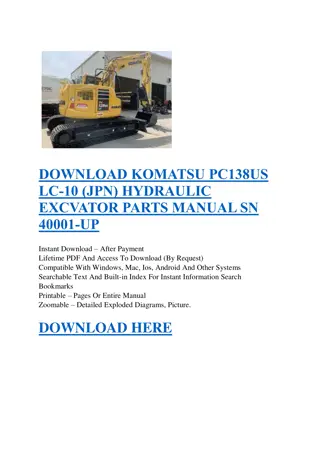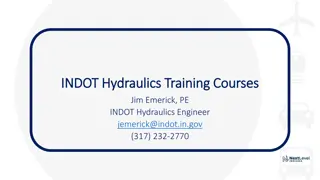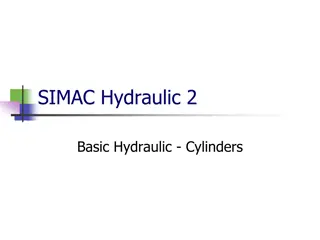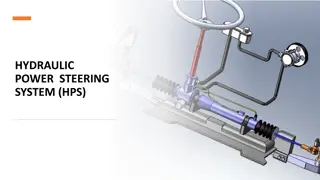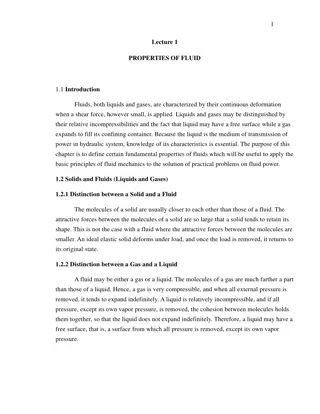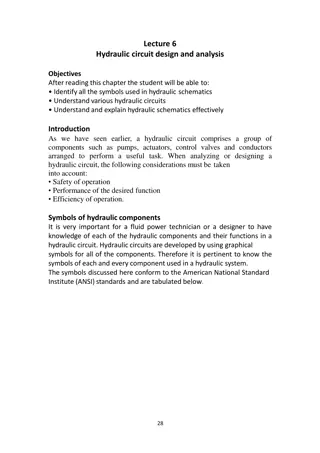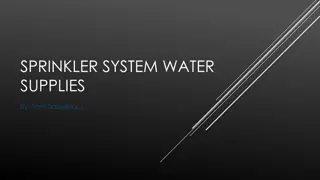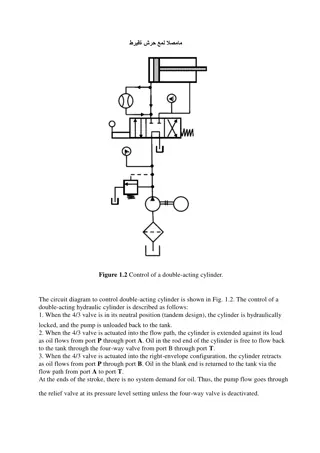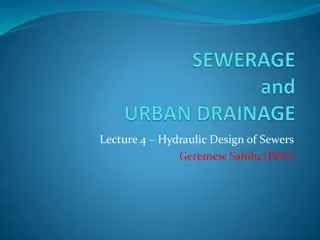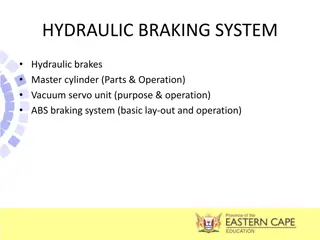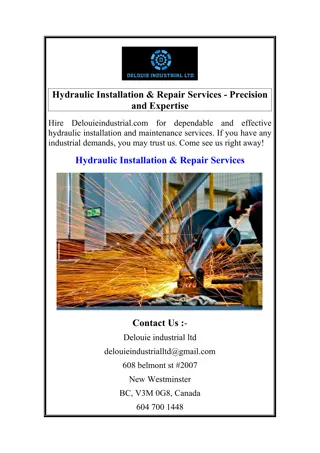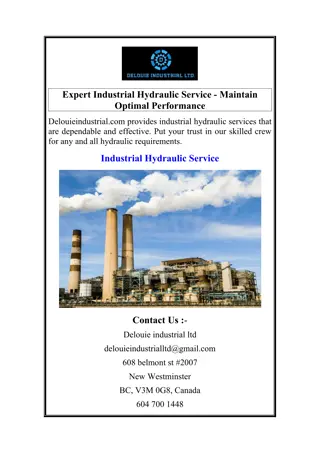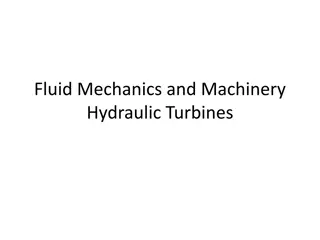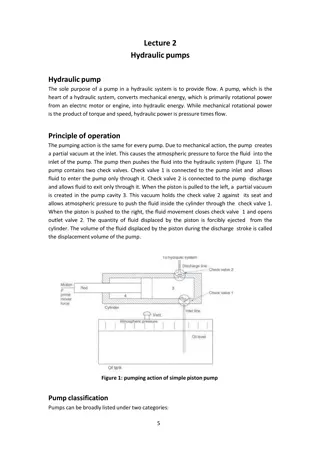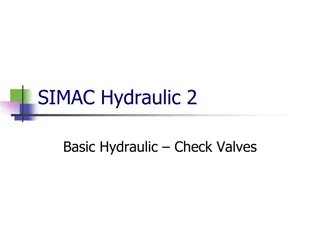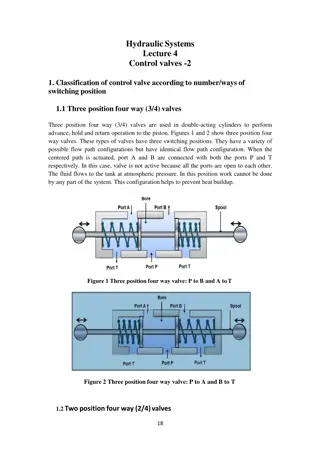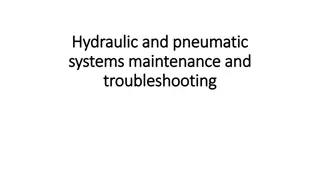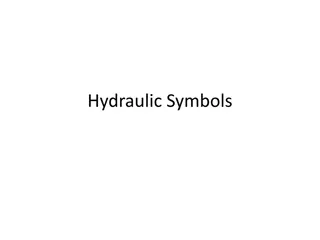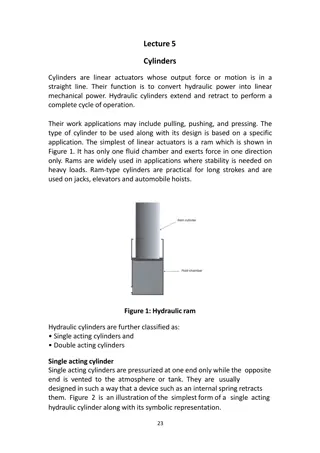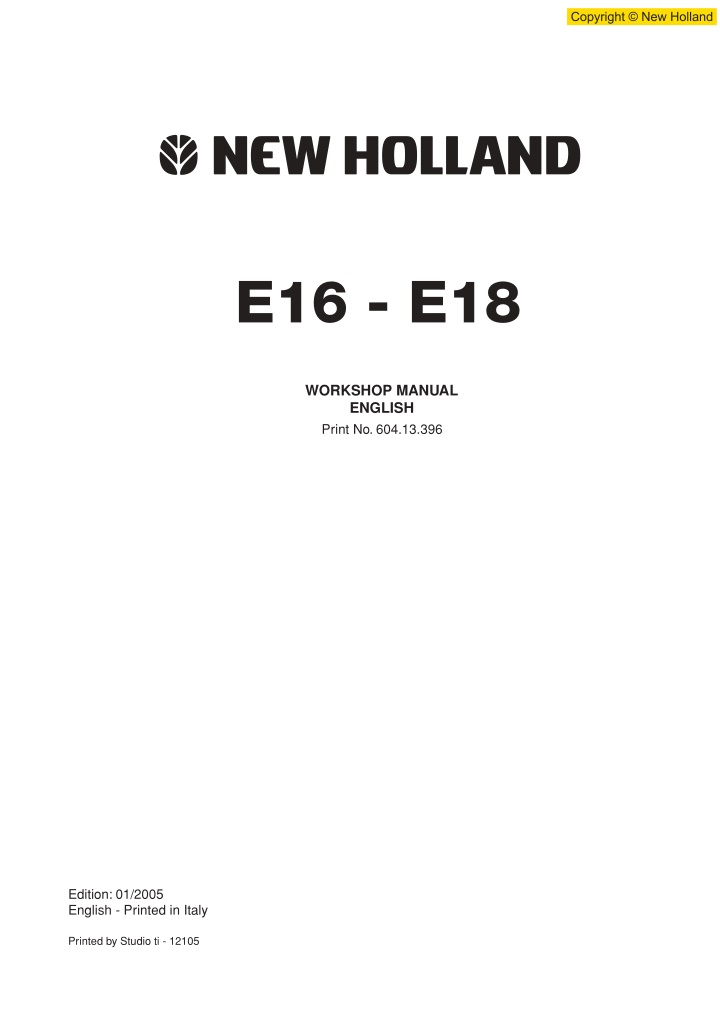
New Holland E16 Hydraulic Excavator Service Repair Manual Instant Download
New Holland E16 Hydraulic Excavator Service Repair Manual Instant Download
Download Presentation

Please find below an Image/Link to download the presentation.
The content on the website is provided AS IS for your information and personal use only. It may not be sold, licensed, or shared on other websites without obtaining consent from the author. If you encounter any issues during the download, it is possible that the publisher has removed the file from their server.
You are allowed to download the files provided on this website for personal or commercial use, subject to the condition that they are used lawfully. All files are the property of their respective owners.
The content on the website is provided AS IS for your information and personal use only. It may not be sold, licensed, or shared on other websites without obtaining consent from the author.
E N D
Presentation Transcript
E16 - E18 WORKSHOP MANUAL ENGLISH Print No. 604.13.396 Edition: 01/2005 English - Printed in Italy Printed by Studio ti - 12105
INTRODUCTION AVOID ACCIDENTS Most accidents, whether they occur in industry, on the farm, at home or on the highway, are caused by the failure of some individuals to follow simple and fundamental safety rules or precautions. For this reason MOST ACCIDENTS CAN BE PREVENTED by recognising the real cause and doing something about it before the accident occurs. Regardless of the care used in the design and construction of any type of equipment there are conditions that cannot be completely safeguarded against without interfering with reasonable accessibility and efficient operation. Carefully read indications, cautions and safety warning quoted in the SAFETY RULES section. A careful operator is the best insurance against an accident. The complete observance of one simple rule would prevent many thousand serious injuries each year. That rule is: Never attempt to clean, oil or adjust a machine while it is in motion. ATTENTION On machines having hydraulically, mechanically and/or cable controlled equipment (such as showels, loaders, dozers, scrapers etc.) be certain the equipment is lowered to the ground before servicing, adjusting and/or repairing. If it is necessary to have the equipment partially or fully raised to gain access to certain items, be sure the equipment is suitably supported by means other than the hydraulic lift cylinders, cable and/or mechanical device used for controlling the equipment. COPYRIGHT BY NEW HOLLAND KOBELCO CONSTRUCTION MACHINERY S.p.A. Product Support - Documentation Centre Strada di Settimo, 323 - 10099 - S. Mauro T.SE (TO) ITALY All rights reserved. Reproduction of text and illustrations in whole or in part, is strictly prohibited.
E16 - E18 SECTION 1 HOW TO USE INDEX Sections index ...................................................................................................................1-1 Introduction .......................................................................................................................1-4 Manual handling............................................................................................................................................ 1-4 Symbols and indications ............................................................................................................................... 1-5 Features of the manual .....................................................................................................1-6 Manual composition ...................................................................................................................................... 1-6 Brief information for manual consultation...................................................................................................... 1-8
https://www.ebooklibonline.com Hello dear friend! Thank you very much for reading. Enter the link into your browser. The full manual is available for immediate download. https://www.ebooklibonline.com
SECTIONS INDEX SECTIONS INDEX PAGES SECTION 1 - HOW TO USE Sections index...............................................................................................................................................1-1 Introduction ...................................................................................................................................................1-4 Features of the manual .................................................................................................................................1-5 SECTION 2 - SAFETY RULES Safety rules ...................................................................................................................................................2-1 Safety signs.................................................................................................................................................2-38 SECTION 3 - PRELIMINARY General precautions for repairs.....................................................................................................................3-1 Escaping procedure in case of emergency ...................................................................................................3-6 International unit conversion system.............................................................................................................3-7 SECTION 4 - SPECIFICATION Foreword .......................................................................................................................................................4-1 Identification data ..........................................................................................................................................4-2 Noise levels (2000/14/EC) ............................................................................................................................4-3 Summary plate for maintenance operations .................................................................................................4-4 Basic components of the mini excavator.......................................................................................................4-5 Technical specifications ................................................................................................................................4-7 Digging performances (canopy) ....................................................................................................................4-8 Digging performances (cab)..........................................................................................................................4-9 Transport dimensions (canopy)...................................................................................................................4-10 Transport dimensions (cab) ........................................................................................................................4-11 Lifting capacities (cab) ................................................................................................................................4-12 Lifting capacities (canopy)...........................................................................................................................4-13 Machine and components weight (dry) .......................................................................................................4-14 Buckets application .....................................................................................................................................4-15 Filling chart..................................................................................................................................................4-16 SECTION 5 - TOOLS Tools of cylinders ..........................................................................................................................................5-1 Tool of hydraulic pump..................................................................................................................................5-4 Tool of pilot valve track .................................................................................................................................5-4 Tool of roller track .........................................................................................................................................5-4 Tool of idler adjuster......................................................................................................................................5-5 Tools of engine..............................................................................................................................................5-5 Tools of travel motor .....................................................................................................................................5-8 SECTION 6 - STANDARD MAINTENANCE TIME TABLE Preface..........................................................................................................................................................6-1 Standard working time table for the maintenance.........................................................................................6-2 SECTION 7 - MAINTENANCE STANDARDS AND TEST PROCEDURES How to use maintenance standards and precuations ...................................................................................7-1 Performance inspection standard table.........................................................................................................7-2 Measuring engine speed...............................................................................................................................7-4 Measuring hydraulic oil pressure ..................................................................................................................7-5 Measuring travel performances.....................................................................................................................7-8 Measuring slew performances ....................................................................................................................7-10 Measuring attachment operating performances..........................................................................................7-12 Measuring slew bearing performances .......................................................................................................7-14 Measuring crawler tension ..........................................................................................................................7-15 1-1
SECTIONS INDEX SECTION 8 - HYDRAULIC SYSTEM Function and features of hydraulic circuit......................................................................................................8-1 Hydraulic circuits and components ...............................................................................................................8-2 Hydraulic circuit operation.............................................................................................................................8-6 SECTION 9 - ELECTRICAL SYSTEM How to read circuit diagram ..........................................................................................................................9-1 SECTION 10 - ATTACHMENT Attachment assy and name.........................................................................................................................10-1 Bucket .........................................................................................................................................................10-2 Arm..............................................................................................................................................................10-5 Boom.........................................................................................................................................................10-10 Swing ........................................................................................................................................................10-15 Dozer.........................................................................................................................................................10-22 Hydraulic cylinders ....................................................................................................................................10-26 SECTION 11 - UPPER STRUCTURE Canopy........................................................................................................................................................11-1 Cab..............................................................................................................................................................11-4 Guard ..........................................................................................................................................................11-6 Floor plate .................................................................................................................................................11-10 Battery.......................................................................................................................................................11-13 Counterweight ...........................................................................................................................................11-14 Fuel tank ...................................................................................................................................................11-17 Hydraulic oil tank.......................................................................................................................................11-20 Air cleaner .................................................................................................................................................11-25 Muffler .......................................................................................................................................................11-27 Hydraulic pump .........................................................................................................................................11-28 Radiator.....................................................................................................................................................11-43 Engine .......................................................................................................................................................11-47 Control valve .............................................................................................................................................11-49 Solenoid valve...........................................................................................................................................11-84 Pilot valve..................................................................................................................................................11-86 Pilot valve travel ........................................................................................................................................11-96 Slew motor ..............................................................................................................................................11-105 Joint swivel..............................................................................................................................................11-139 Selector valve..........................................................................................................................................11-154 Upper frame ............................................................................................................................................11-159 SECTION 12 - TRAVEL SYSTEM Low structure...............................................................................................................................................12-1 Crawler........................................................................................................................................................12-3 Slide plate .................................................................................................................................................12-12 Roller tracks ..............................................................................................................................................12-14 Idler adjuster .............................................................................................................................................12-19 Sprocket ....................................................................................................................................................12-28 Travel motor ..............................................................................................................................................12-29 Slew bearing .............................................................................................................................................12-71 Lower frame ..............................................................................................................................................12-76 SECTION 13 - TROUBLESHOOTING HYDRAULIC SYSTEM General precautions....................................................................................................................................13-1 Trouble diagnosis: Hydraulic.......................................................................................................................13-2 Troubleshooting ..........................................................................................................................................13-3 SECTION 14 - TROUBLESHOOTING ELECTRICAL SYSTEM Trouble diagnosis: Electrical .......................................................................................................................14-1 Troubleshooting ..........................................................................................................................................14-2 1-2
SECTIONS INDEX SECTION 15 - TROUBLESHOOTING ENGINE Trouble diagnosis: Engine...........................................................................................................................15-1 Troubleshooting ..........................................................................................................................................15-2 SECTION 16 - ENGINE Specifications and Performance ...............................................................................................................16-1 Cross Sectional Views ..............................................................................................................................16-15 Cooling water, lubricating oil and fuel oil..................................................................................................16-17 Troubleshooting ........................................................................................................................................16-21 Measuring instruments..............................................................................................................................16-25 Measurement, inspection and adjustment ................................................................................................16-29 Adjustment the valve head clearance .......................................................................................................16-31 Checking the v-belt tension.......................................................................................................................16-32 Measuring and checking the injection pressure and spray patterns of the fuel injection valve.................16-32 Checking and adjustament the fuel injection timing ..................................................................................16-36 Adjustament the no-load maximum (or minimum) revolutions ..................................................................16-38 Checking the cooling water system and radiator for water leakage..........................................................16-38 Checking the battery .................................................................................................................................16-39 Checking the sensors................................................................................................................................16-41 Checking the oil cooler..............................................................................................................................16-42 Checking the piston cooling nozzle...........................................................................................................16-43 Measuring Procedure, Service Data and Corrective Action......................................................................16-45 Disassembly and reassembly ...................................................................................................................16-73 Service data ..............................................................................................................................................16-83 Tightening torque ......................................................................................................................................16-89 Fuel injection pump for indirect injection system.......................................................................................16-91 Fuel Injection Pump for Direct Injection System .......................................................................................16-97 Governor .................................................................................................................................................16-111 Turbocharger...........................................................................................................................................16-123 1-3
INTRODUCTION INTRODUCTION INTRODUCTION This service manual has been prepared in order to increase repair quality, providing to the technicians the elements for a good knowledge of the product and showing the proper procedures to carry out the maintenance operations. We recommend to thoroughly read the content and follow it when necessary. It is a concise guide. It covers construction features, operation principle, troubleshooting, disassembly and assembly of components and repair action. Using this manual in systematic and rational way it is possible to reduce the repairing errors and delay that could cause machine stop with a detriment of cost management. The information quoted in this service manual are supplied also to be used for training aids. Therefore it is advisable to be used in the training of new personnel that will be employed in the machine maintenance. All the information, illustrations and specifications contained in this service manual are based on the latest product information available at the time of publication. The dealer reserves the right to makes changes at any time without notice to this service manual for technical or trading reasons. MANUAL HANDLING CHANGES AND SUPPLEMENTS This service manual is carried out in loose-leaf and therefore can be easily kept up-to-date. The personnel in charge is responsible for updating the manual and will insert the changes or supplements that the Dealer will issue to its service organisation. 1-4
INTRODUCTION SYMBOLS AND INDICATIONS In this service manual, symbols and indications are used to draw the attention on important points for safety and quality. SAFETY This safety symbol is used for important safety message. When you see this symbol, be alert to the potential for personal injury. Strictly follow the recommended precautions. INDICATIONS Reading this service manual you can find indications as IMPORTANT or NOTE that have the following meaning: IMPORTANT Indicates a situation which, if not avoided, could caused damages to the machine. Note Indicates supplementary technical information or know-how. 1-5
FEATURES OF THE MANUAL FEATURES OF THE MANUAL MANUAL COMPOSITION This service manual is divided into ten Sections. The Section names and its contents are as below. To fully use this service manual it is essential to understand how it is organised. Therefore, in order to speed up the searching of wished subject, it is advisable to carefully read this chapter. SECTION 1 - HOW TO USE Begin to read first this Section to know the manual composition. This will help you for subject searching. SECTION 2 - SAFETY RULES Indication on how to avoid dangerous situation during the use and maintenance are given in this Section. Furthermore safety decals and related indications used on the machine are listed on this Section. SECTION 3 - PRELIMINARY This Section contains the information related to general precautions for repairs and escaping procedure in can of emergency. SECTION 4 - SPECIFICATION This Section quotes the specification and data of the machine. SECTION 5 - TOOLS This Section contains the list of special tools. SECTION 6 - STANDARD MAINTENANCE TIME TABLE SECTION 7 - MAINTENANCE STANDARDS AND TEST PROCEDURES SECTION 8 - HYDRAULIC SYSTEM This Section describes the operation of the machine from hydraulic point of view. 1-6
FEATURES OF THE MANUAL SECTION 9 - ELECTRICAL SYSTEM This Section describes the electric system of the machine and the connection with the electrical users. SECTION 10 - ATTACHMENT This Section describes the attachments and its components and maintenance rules with related disassembly/ assembly. SECTION 11 - UPPER STRUCTURE This Section contains the information related to the operation principle of the system, of the assemblies and their components located on the machine upper frame. Furthe more the assembly/disassembly procedures of main devices are quotated. SECTION 12 - TRAVEL SYSTEM This Section contains the information related to the operation principle of the system, of the assemblies and their components located on the machine travel system. Further more the assembly/disassembly procedures of main devices are quotated. SECTION 13 - TROUBLESHOOTING HYDRAULIC SYSTEM In this section information is provided for troubleshooting the hydraulic system. SECTION 14 - TROUBLESHOOTING ELECTRICAL SYSTEM In this section information is provided for troubleshooting the electric system. SECTION 15 - TROUBLESHOOTING ENGINE In this section information is provided for troubleshooting the engine. SECTION 16 - ENGINE This section descibes specifications, performance, measurament, inspection, disassembly/assembly and service data of engine. 1-7
E16 - E18 SECTION 2 SAFETY PRECAUTIONS INDEX Safety rules .......................................................................................................................2-1 Safety signs.....................................................................................................................2-38
SAFETY PRECAUTIONS SAFETY PRECAUTIONS Keep head, body, limbs, hands and feet inside the operator s compartment at all times to reduce exposure to external hazards. Be careful of possible slippery conditions of the steps and hand rails as well as of the ground around the machine. Wear protective boots or shoes with the soles made of highly no-slip rubber. Do not leave the machine until it has come to a complete stop. Always check height, width and weight limitations which may be encountered in the working site and ensure the machine does not exceed them. Assess exact paths of gas ducts, water mains, telephone lines, sewers, overhead and under- ground electric lines and all other possible ob- stacles. Such paths should be opportunely defined by competent Authorities. If necessary, require that the service is interrupted or said installations are moved prior to starting the work. You must know the working capacity of the machi- ne. Define the rear upperstructure swing area and provide for opportune barriers to prevent access into it. Never exceed machine lifting capacity. Remain within the limits shown in the loading capacity chart located on the machine. GENERALITIES Read the Operation and Maintenance Instruction Manual carefully before starting, operating, main- taining, fuelling or servicing the machine. Carefully read the explanation to each and all safety signs in the special section of this Manual before starting, operating, maintaining, fuelling or servicing the machine. Machine-mounted safety plates are colour coded yellow with black borders when they refer to points where special WARNING must be paid and failure to observe them may cause a serious DANGER to the integrity of machine operators. They are white with red borders and black lettering when they refer to a FORBIDDEN practice. It is fundamental that all machine operators know very well the meaning of each safety plate as this considerably decreases operating hazards and accidents. Do not allow unauthorised personnel to operate or service this machine. Do not wear rings, wrist watches, jewellery, loose or hanging garments, such as ties, torn clothing, scarves, unbuttoned or unzipped jackets that can get caught in moving parts. Wear certified safety clothes such as: hard hat, no- slip footwear, heavy gloves, ear protection, safety glasses , reflector vests, respirators every time the job requires it. Ask your employer about safety regulations in force and protective equipment. Always keep the operator s compartment, step plates, grab-rails and handles clean and clear of foreign objects, oil, grease, mud or snow to mini- mise the danger of slipping or stumbling. Remove mud or grease from your shoes before operating the machine. Do not jump on or off the machine. Always keep both hands and one foot, or both feet and one hand in contact with steps and/or grab rails. Do not use controls or hoses as hand holds. Hoses and controls are movable parts and do not provide solid support. Besides, controls may be inadvertently moved and cause unexpected movement of the machine or its attachments. Never operate the machine or its attachments from any position other than sitting in the driver s seat. STARTING Never start or operate a failed machine. Walk all around the machine before mounting. Before operating the machine, make sure that any possible dangerous condition has been properly removed. Before starting machine, check that steering and attachment controls are in the neutral position and the safety lever is in the LOCK position. Immediately report any malfunction of parts or systems to the maintenance managers for proper action. Prior to starting the engine, check, adjust and lock the driver s seat for maximum riding comfort and control accessibility. Prior to operating the machine and/or its attach- ments, check that bystanders are outside the machine operating range. Sound the horn. Obey all hand signals, safety indications and signs. 2-1
SAFETY PRECAUTIONS Due to the presence of flammable fluids, never check fuel level, refuel, charge the batteries or use the starting fluid in the presence of smoking mate- rials, open flames or sparks. Ensure that nobody is within the excavator opera- ting area before starting the machine, swinging the upper structure or moving in any direction. Adjust all rear-view mirrors for maximum visibility of the area behind the machine. Ensure that engine speed is appropriate to the job to be carried out. If any hydraulic control or system exhibits erratic performance or responds abnormally, have the machine checked for air in the system. Air in these circuits may cause incorrect move- ments with consequent accident hazard. Refer to the Operation and Maintenance Instruc- tion Manual about corrective action to be taken. slack carefully. Avoid kinking or twisting chains or cables. Carefully inspect cables or chains for flaws or problems before proceeding. Do not pull through a kinked chain or cable as the high anomalous stresses existing in this condition may induce failures in the kinked portion. Always wear heavy gloves when handling chains or cables. Chains and cables should be securely anchored using suitable hooks. Anchor points should be strong enough to with- stand the expected load. Keep anyone clear of anchor points and cables or chains. Do not pull or tow unless the operator s compartments of the machines involved are properly protected against possible backlash in case of cable or chain failure or detachment. Be alert of soft ground conditions close to newly constructed walls. The fill material and machine weight may cause the wall to collapse under the machine. In darkness, check area of operation carefully before moving in with the machine. Use all lights provided. Do not move into low visibility areas. If the engine tends to slow down and stall for whatever reason under load or at idle, immediately report this problem to the maintenance managers for proper action. Do not operate the machine until this condition is corrected. Regularly check all exhaust system components, as exhaust fumes are toxic for the operator. Operators must know the performance of the ma- chine they are driving. When working on slopes or near sudden level drops in the terrain, pay attention not to lose adherence and avoid loose soft ground since over- turn or loss of machine control could result. If noise level is high and exceeds 90 dB(A) over 8 hours at the operator s ear, wear approved ear protection in compliance with local regulations. Do not operate the machine if you are extremely tired or feel ill. Be especially careful towards the end of the working shift. Where removable counterweights are provided, do not operate the machine if they have been removed. When operating the machine, keep in mind height limits of overhead doors, arches, overhead cables OPERATING Do not run the engine of this machine in closed buildings without proper ventilation capable to remove harmful exhaust gases which concentrate in the air. Keep the operator s compartment free of foreign objects, especially if not firmly secured. Never use the machine to transport objects, unless proper securing points are provided. Do not carry riders on the machine. Study and familiarise with escape routes alterna- tive to normal exit routes. For your personal safety, do not climb on or off the machine while it is in motion. Make sure that bystanders are clear of the machi- ne operating range before starting the engine and operating the attachment. Sound the horn. Obey all hand signals, safety indications and si- gns. When backing, always look to where the machine is to be moved. Be alert of the position of bystan- ders. Should someone enter the work area, stop the machine. Maintain a safe distance from other machines or obstacles to ensure required visibility conditions. Always give way to loaded machines. Maintain a clear vision of the surroundings of the travel or work area at all times. Keep cab windows clean and repaired. When pulling loads or towing through a cable or chain, do not start suddenly at full throttle. Take-up 2-2
E16 - E18 SECTION 3 PRELIMINARY REMARKS INDEX General precautions for repairs.........................................................................................3-1 Escaping procedure in case of emergency .......................................................................3-6 International unit conversion system.................................................................................3-7
PRELIMINARY REMARKS GENERAL PRECAUTIONS FOR REPAIRS PREPARATION BEFORE DISASSEMBLING Understanding operating procedure Read OPERATION & MAINTENANCE MANUAL carefully to understand the operating procedure. Cleaning machines Remove soil, mud, and dust from the machine before carrying it into the service shop to prevent loss of work efficiency, damage of parts, and difficulty in rust prevention and dust protection while reassembling. Inspecting machines Identify the parts to be disassembled before starting work, determine the disassembling procedure by yourself considering the workshop situations etc., and request procurement of necessary parts in advance. Recording Record the following items for communication and prevention of recurring malfunction. Inspection date and place. Model name, applicable machine number, and hour meter read. Trouble condition, place and cause, if any. Visible oil leakage, water leakage and damage. Clogging of filters, oil level, oil quality, oil contami- nation and loosening of connections. Result of consideration if any problem exists based on the operation rate per month calculated from hour meter indication after the last inspection date. Arrangement and cleaning in service shop Tools required for repair work. Prepare space to place the disassembled parts. Prepare oil containers for spilling oil etc. 3-1
PRELIMINARY REMARKS SAFETY IN DISASSEMBLING AND ASSEMBLING Wear appropriate clothes with long sleeves, safety shoes, safety helmet and protective glasses. Suspend warning tag "DO NOT OPERATE" from the doorknob or the operating lever, and have a preliminary meeting before starting work. Stop the engine before starting inspection and maintenance to prevent the operator being caught in machine. Identify the location of a first-aid kit and a fire extinguisher, and also where to make contact in a state of emergency. Choose a hard, level and safe place, and place the attachment on the ground securely. Use a lifter such as a crane to remove heavy parts (20 kg [45 lbs] or more) from the machine. Use proper tools, and replace or repair defective tools. Support the machine and attachment with supports or blocks if the work is performed in the lifted condition. 3-2
Suggest: If the above button click is invalid. Please download this document first, and then click the above link to download the complete manual. Thank you so much for reading
PRELIMINARY REMARKS HYDRAULIC EQUIPMENT DISASSEMBLY/ REASSEMBLY Remove dirt and moisture from and perform degre- asing on the surface where liquid gasket to be applied. Remove rust preventive agent from the new parts before use. Fit bearings, bushings and oil seals using special jigs. Assemble the parts utilizing matching marks. Ensure all the parts are completely assembled after the work. Hydraulic equipment removal Before disconnecting pipes, release the hydraulic pressure of the system, or open the return side cover and take out the filter. Carefully drain oil of the removed pipes into a containers without spilling on the floor. Apply plugs or caps on the pipe ends to avoid oil spillage and dust intrusion. Clean off the external surface of the equipment before disassembling, and drain hydraulic and gear oil before placing it on the workbench. Hydraulic equipment installation Ensure hydraulic oil and lubricant are properly supplied. Perform air bleeding when: - Hydraulic oil changed - Parts of suction side piping replaced - Hydraulic pump installed - Slewing motor installed - Travel motor installed - Hydraulic cylinder installed Hydraulic equipment disassembly Do not disassemble, reassemble or modify the hydraulic equipment without the permission of the manufacturer, who is not responsible for the perfor- mance and function of the product after reassem- bling. When disassembling and reassembling for unavo- idable reason, refer the work to qualified personnel who have the specific knowledge or completed the parts service training. Provide matching marks to facilitate reassembling work. Before starting the work, read the manual of disas- sembling procedure, if it is provided, and decide whether the work can be performed by yourself. Use the special jig and tools without fail if they are specified. If it is hard to remove a part according to the procedure, do not try it by force but investigate the cause. Place the removed parts in order and attach tags to facilitate the reassembling. Note the location and quantity of parts commonly applied to multiple locations. WARNING Operation of the hydraulic equipment without filling hydraulic oil or lubricant or without performing air bleeding will result in damage to the equipment. Perform air bleeding of the hydraulic pump and slewing motor after loosening the upper drain plug, starting the engine and keep it in low idle condition. Complete the air bleeding when seeping of hydrau- lic oil is recognized, and tightly plug. Perform air bleeding of the travel motor and the hydraulic cylinders by running the engine for more than 5 minutes at low speed without load. Inspecting parts Ensure that the disassembled parts are free from seizure, interference and uneven contact. Measure and record wear condition of parts and clearance. If the problem is found in a part, repair or replace it with a new one. WARNING Do not allow the hydraulic cylinder to bottom on the stroke end just after the maintenance. Perform air bleeding of pilot line by performing a series of digging, slewing and travel. Check hydraulic oil level after placing the attach- ment to the oil check position, and replenish oil if necessary. Hydraulic equipment reassembly Turn ON the ventilation fan or open windows to maintain good ventilation prior to starting the clea- ning of parts. Perform rough and finish cleaning before assem- bling. Remove washing oil by air and apply clean hydrau- lic or gear oil for assembling. Always replace the removed O-rings, backup rings and oil seals with new ones by applying grease in advance. 3-3
https://www.ebooklibonline.com Hello dear friend! Thank you very much for reading. Enter the link into your browser. The full manual is available for immediate download. https://www.ebooklibonline.com

